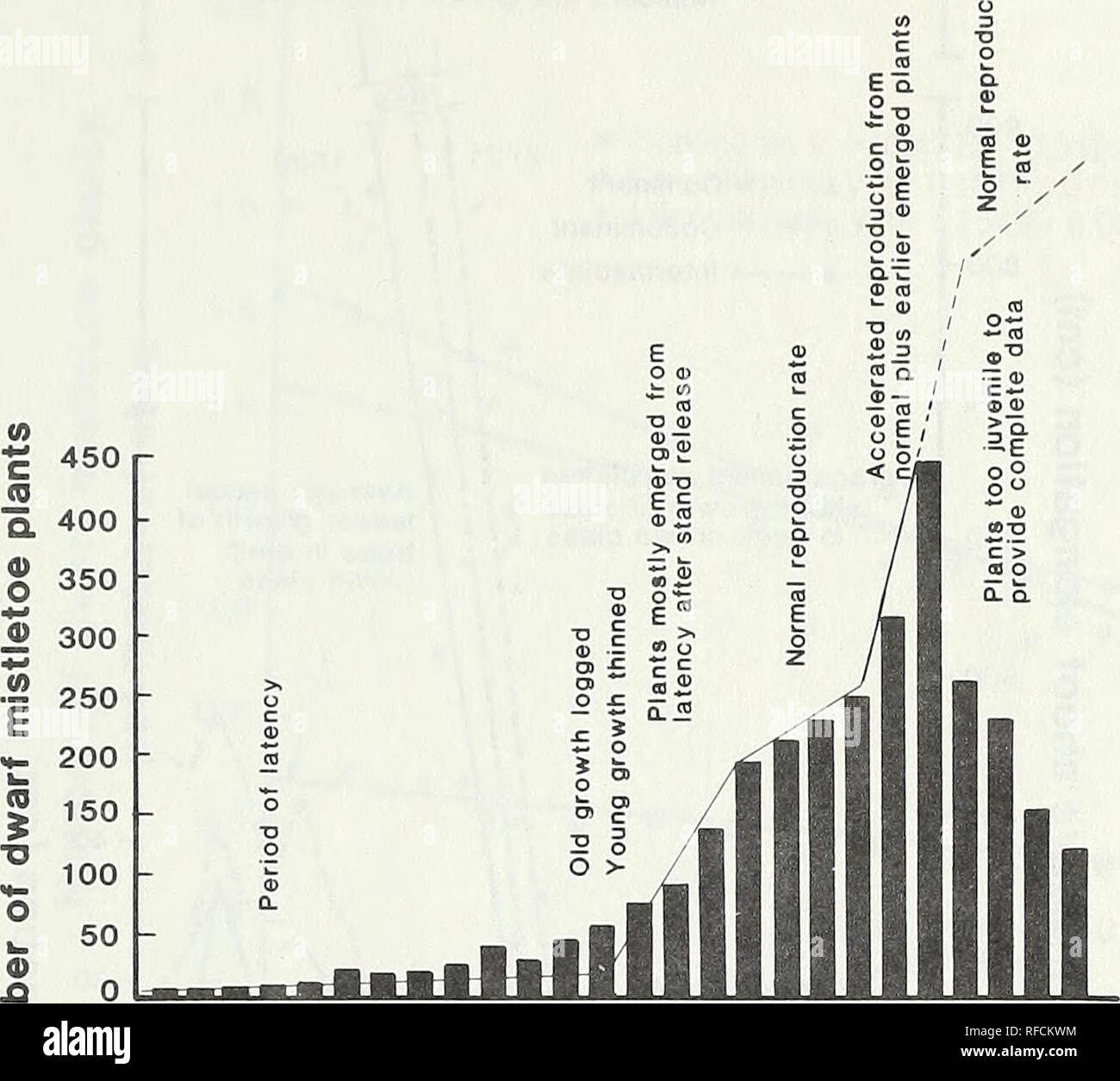. Response of dwarf mistletoe-infested ponderosa pine to thinning. Arceuthobium Propagation; Ponderosa pine Diseases and pests; Ponderosa pine Thinning. o. £ 1945 47 49 51 53 55 57 59 61 63 65 67 69 3 z Year of origin of supporting branch segment Figure 2—Dwarf mistletoe population trends of 54 small, pole-size ponderosa pines: 14 dominants, 14 codominants, and 26 intermediates. Columns represent number of dwarf mistletoe plants originating on each successive year's shoots. Lines represent ascent rate variations of population develop- ment. Projection of bars preceding 1957 above line is an an

Image details
Contributor:
Book Worm / Alamy Stock PhotoImage ID:
RFCKWMFile size:
7.2 MB (238.9 KB Compressed download)Releases:
Model - no | Property - noDo I need a release?Dimensions:
1670 x 1497 px | 28.3 x 25.3 cm | 11.1 x 10 inches | 150dpiMore information:
This image is a public domain image, which means either that copyright has expired in the image or the copyright holder has waived their copyright. Alamy charges you a fee for access to the high resolution copy of the image.
This image could have imperfections as it’s either historical or reportage.
. Response of dwarf mistletoe-infested ponderosa pine to thinning. Arceuthobium Propagation; Ponderosa pine Diseases and pests; Ponderosa pine Thinning. o. £ 1945 47 49 51 53 55 57 59 61 63 65 67 69 3 z Year of origin of supporting branch segment Figure 2—Dwarf mistletoe population trends of 54 small, pole-size ponderosa pines: 14 dominants, 14 codominants, and 26 intermediates. Columns represent number of dwarf mistletoe plants originating on each successive year's shoots. Lines represent ascent rate variations of population develop- ment. Projection of bars preceding 1957 above line is an anomaly resulting from tabulation of formerly latent, invisible plants after they emerged in response to thinning. 5. Please note that these images are extracted from scanned page images that may have been digitally enhanced for readability - coloration and appearance of these illustrations may not perfectly resemble the original work.. Roth, Lewis F; Barrett, James W. (James Willis), 1922-. [Portland, Or. ] : U. S. Dept. of Agriculture, Forest Service, Pacific Northwest Forest and Range Experiment Station